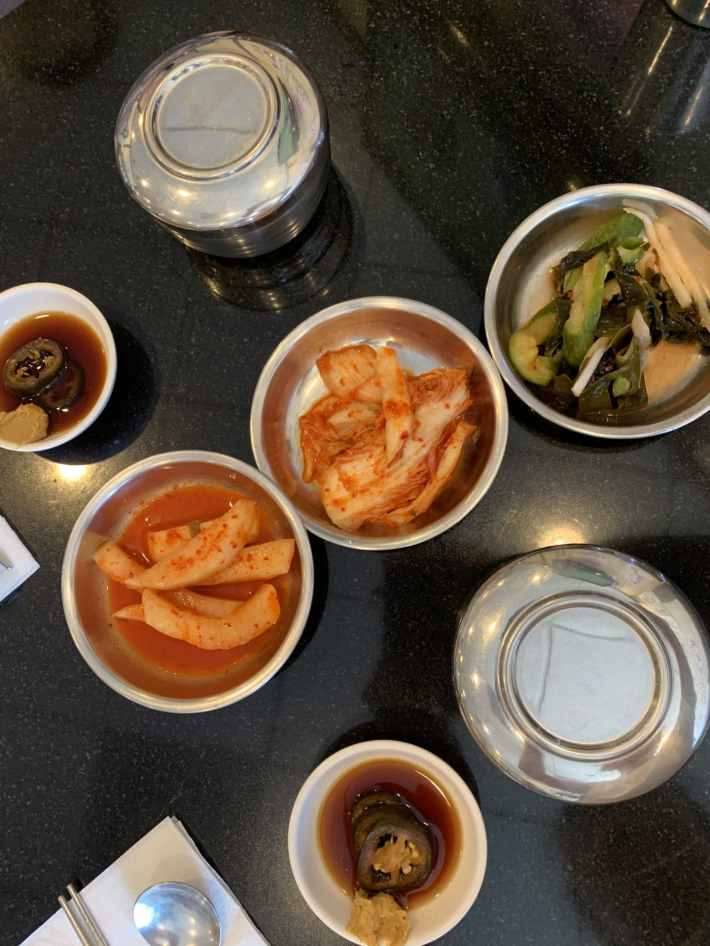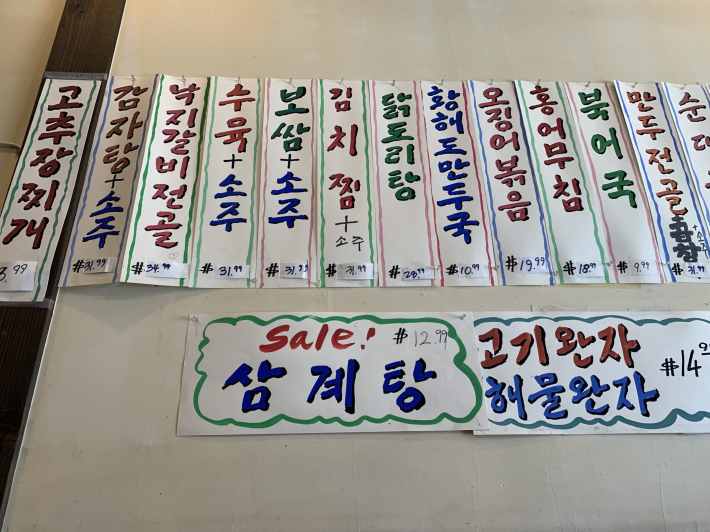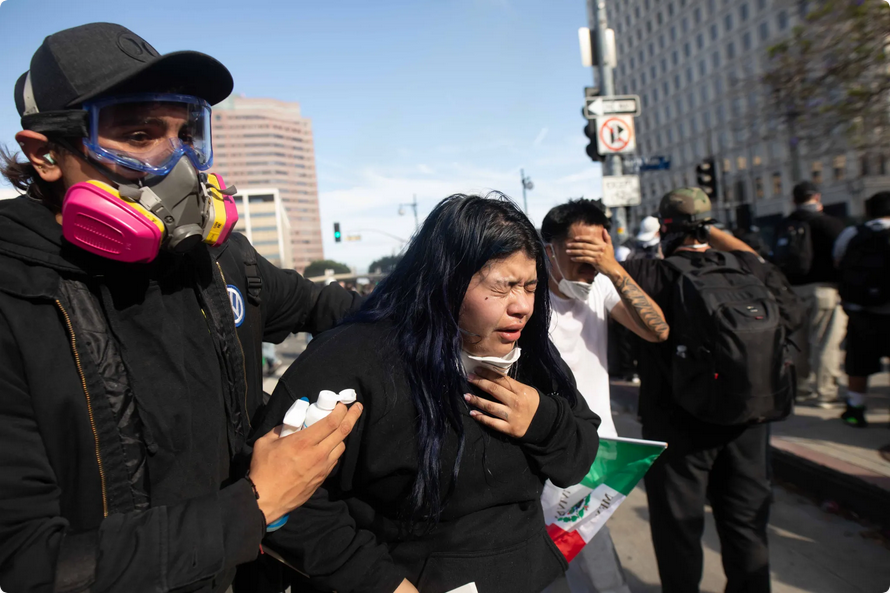[dropcap size=big]A[/dropcap]s we leave October behind, unseasonable heat keepings wafting through unpredictable spells of crisp air. It’s been a weird month of hot and cold; when the weather is this confused, there’s always stone bowls of Korean gomtang to appease both extremities of the weather.
There’s a popular saying amongst people of Korean descent that goes “yi-yeol-chi-yeol,” or “fight fire with fire.” In other words, cool down with hot, spicy foods. It sounds counterintuitive, but in Korean, this is a crucial mantra for fueling the spirit. It’s believed that our bodies are actually cooler in hotter weather; eating something that makes us sweat will thus balance our chi, so kickstart homeostasis in Koreatown with gomtang.
Translated in Korean to “slow-simmered soup,” gomtang comes to your table at a rollicking boil. It’s made with four key simple ingredients: beef parts (ribs, oxtail, brisket, ox head, bones), Korean radish (mu), water, and garlic. Once the soup is fully cooked and ready to serve, the dish can be garnished with diced green onions and salt and Korean red pepper for taste.

The most important ingredient to making savory, brothy gomtang is time – lots of it. Gomtang is known for the long, arduous process of slow-cooking the bone and meat. The time it takes to complete the process depends on what part of the cow is being cooked. In its preparation stages, it can take one hour to soak the beef parts in cold water to drain the blood. The meat, typically brisket or ox head, will then sit in hot water for an additional 3-5 hours until it turns tender and falls off its bones. The heat pulls out its flavors and permeates throughout the water. Ggori (oxtail) gomtang, however, can take up to 12 hours to be ready. This arduous process is similar to the long-drawn flavors of proper tonkatsu ramen or pho.
Time’s counterpart is vigilance; making gomtang is not a sit-and-wait process. It’s important to skim out the fat that floats to the top for a clean soup. Homemade gomtang is thus an act of love.
The cuts are soft and chewy; the meats releases its structure under the pressure of boiling water, leaving customers with many happy, savory bites of pure beefy pleasure.
One of the oldest restaurants to perfect the gomtang in Koreatown is Sulga Jinju Gom Tang on Beverly Boulevard. Their hot dishes arrive in traditional ttukbaegis, earthen cooking bowls that retain the heat of boiling dishes and thus serve doubly as serveware. The soups come babbling in their boil. Their gomtang is guaranteed to make you sweat on a scorching winter-in-L.A. day or a traditional cold one.

The cooks of Sulga Jinju found a way to have time on their side. They’ve mastered a nightly routine where they throw in cleaned and drained ox bones into giant pots of water so that they stew through the morning. Before closing, they skim out any impurities that float to the top of the pots. By the next day, gomtang is nearly ready to be served to customers minutes upon their orders.
Hannah Chun has been running Sulga Jinju Gomtang for four years. Prior to her, the restaurant was operated by two women who had been serving gomtang in Koreatown for almost two decades. “We have used the same recipe and method up until the former owners reached their seventies and wanted to leave the business,” explained Chun, who is a family friend. Chun had been helping in the kitchen when she was given the opportunity to take over. Nowadays, she shops for organic beef cuts and offers rice alternatives to appeal to the health- and eco-conscious diners.
And yet, [these] soups cost the same as our city's $13 salads, smoothies, and cold deli meat sandwiches. At least in Koreatown, you’d get something more hearty and filling at similar or less of a price.
Less than a mile away from Sulga Jingu is Hyun Poong Gom Tang, now in its 15th year in Los Angeles. Whereas Sulga Jinju is an independently owned restaurant, Hyun Poong is a chain that began in Daegu, South Korea, with an additional United States location in Cypress. Open daily at 6:30 AM, Hyun Poong sees older clientele ambling in for late breakfasts or leisurely lunches, rinsing down their cold spicy noodles with bottles of Soju. Plenty of their customers regularly opt for the gomtang. They offer gomtang with ox knees and feet options. The cuts are soft and chewy; the meats releases its structure under the pressure of boiling water, leaving customers with many happy, savory bites of pure beefy pleasure. It goes perfectly with Hyun Poong’s milky broth; dunk kimchi and red pepper flakes into the bowl to tinge the broth with some heat.
For such a time-expensive process, the price of gomtang at either Koreatown establishment is reasonable: $10.99 for standard gomtang and $14.99 for oxtail soup at Hyun Poong ($19.99 at Sulga Jinju). If time is labor, then both Sulga Jingu and Hyun Poong expend so much to prepare the specialty dish. And yet, their soups cost the same as our city's $13 salads, smoothies, and cold deli meat sandwiches. At least in Koreatown, you’d get something more hearty and filling at similar or less of a price.
There's a lost art to waiting for flavors to reveal themselves. In our new era of made-for-Instagram food at restaurants and hassle-free meal kits, we are accustomed to rapid gratification, but there’s some peace to coming across a dish that gets better with time and patience. Besides, we may find some truth to “yi-yeol-chi-yeol” while slurping up a simmering bowl of Korean ox bone soup. Who knows when the Los Angeles heat will let up, or if this current cold snap will stick around for a bit, but leave it to the Koreans to fight fire with fire and warm you up from the inside out.







